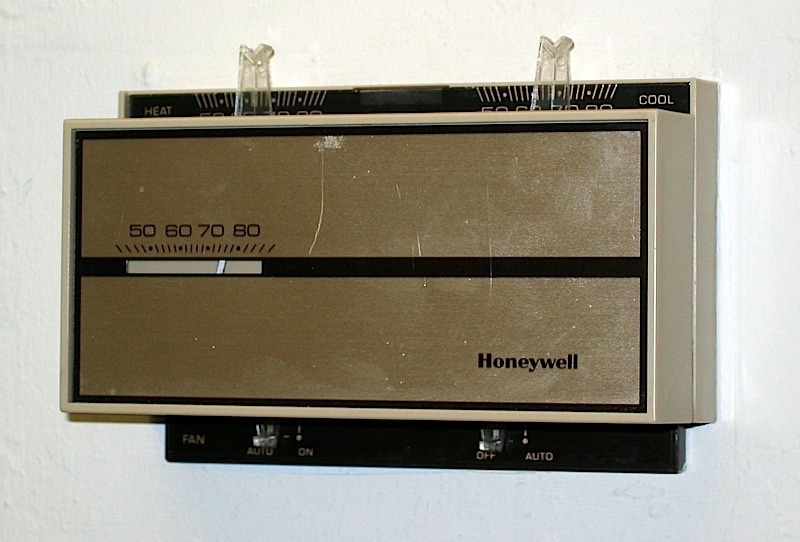Time to think about controlling heating costs
It is possible to control the amount of heating fuels used to maintain an optimal environment inside barns for pigs.
December 2, 2021

By Lee J. Johnston1 and Erin Cortus2
1West Central Research and Outreach Center, University of Minnesota, Morris
2Bioproducts and Biosystems Engineering, University of Minnesota, St. Paul
In a report released on Nov. 9, 2021, the U.S. Energy Information Administration (EIA) projected that Midwest U.S. propane price would increase from $1.56/gallon averaged over the 2020-2021 heating season to $2.57/gallon in the 2021-2022 heating season, a projected 65% increase. This projected price would be the highest price since the 2013-2014 heating season when propane price was $2.61/gallon according to the EIA. Pork producers likely remember that regionalized shortages in the 2013-2014 heating season forced some producers to pay close to $5/gallon of propane.
Even though heating costs represent a very small portion of the total cost to produce a market, they still merit attention from cost-conscious pork producers. Aside from contracting propane needs at times of low prices, pork producers do not have much ability to control price of propane they purchase. However, producers do have some control over the amount of propane they use in their pork production system. Controlling the amount of propane used is an effective approach for pork producers to manage heating costs.
Pork producers need to re-evaluate heating and ventilation management of their pig barns to ensure they are using as little heating fuel as possible without compromising pig performance and health. Here are a couple tips for reducing use of heating fuels.
Reduced nocturnal temperature in nurseries
In a recent survey of commercial swine barns, we learned that about 88% of the fossil energy (electricity and heating fuel) used to ventilate and heat swine nurseries is used for heating (Sharpe et al., 2018). This observation prompts an obvious question: Can barn managers reduce heating demands of a nursery to reduce fuel consumption without compromising pig performance? Right before the last spike in propane prices, we evaluated the use of Reduced Nocturnal Temperature (RNT) regimens in nursery barns to determine potential fuel savings and effects on pig performance. With RNT regimens, daytime nursery room temperature follows a ramping pattern normally used in nursery barns. However, during nighttime, room temperature is reduced 10 to 15 °F from the daytime temperature. The reduced nighttime temperature is achieved by reducing setpoint of the room heater without changing fan setpoints. This approach allows the room to cool to the new heater setpoint then the heater maintains rooms at the cooler target temperature. In the morning, the heater setpoint returns to the daytime temperature and the room warms to the regular daytime target temperature. Many computerized heating/ventilation controllers currently on the market are capable of automatically implementing this temperature regimen.
Our most successful RNT regimen began on day 5 after pigs entered the nursery and involved reducing room temperature 15 °F from the daytime temperature beginning at 7:00 p.m. each day. At 7:00 a.m., room temperature was brought back to the normal daytime temperature. Using this protocol in experiments across four collaborating universities, we found no difference in daily weight gain, daily feed intake or gain efficiency between nursery pigs housed in control rooms (CON) or RNT rooms (Table 1). Similarly, there were no differences in morbidity or mortality of pigs exposed to the two temperature regimens. However, we measured a 30% reduction in heating fuel use and a 20% reduction in use of electricity. The RNT regimen consistently reduced heating fuel use across the four participating research sites with no detrimental effects on pig performance. We think it is important that the RNT regimen not be implemented until pigs are acclimated to the barn and eating well. This is why we waited 5 days after arrival to implement the RNT regimen. If pigs are experiencing a health challenge, a less aggressive nighttime temperature drop (less than 15 °F) might be warranted to help pigs cope with their disease situation.
Table 1. Effect of reduced nocturnal temperature (RNT) on nursery pig performance and energy use1, 2 |
Trait |
Final pig wt., lb |
Avg. daily gain, lb |
Avg. daily feed intake, lb |
Gain/feed |
Heating fuel used, Btu/pig |
Electricity used, kWh/pig |
1Adapted from Johnston et al. (2013). 2Collaborating universities included: University of Minnesota, South Dakota State University, Ohio State University, and University of Missouri. |
Proper barn controller settings
Heaters add heat to a barn, whereas ventilation removes heat. When both heat and ventilation are needed during cold weather, some simple tweaks to settings of the control system influence room temperature, heater and fan operation, and ultimately, heating fuel use.
We can use simulations to describe a ventilation system’s response to controller settings in an example barn for a range of pig sizes, barn designs, and controller settings. For this example, assume a 2,400-head finishing barn with 150-lb pigs. The outdoor temperature starts at 32 °F, and increases steadily to 41 °F. Two scenarios of controller settings and the corresponding simulated response of the barn’s ventilation system are presented in Table 2.
Table 2. Impact of controller settings on simulated barn heating and ventilation responses |
|
Controller Settings: |
Setpoint |
Heater Offset |
Heater Differential |
Variable Speed Fan Bandwidth |
Simulated Results: |
Average Room Temperature |
Heater Operation Time |
Fan Speed Above Minimum |
Regardless of controller type, setpoint is the term we use to describe the target room condition, but it does not necessarily mean the room temperature. With most modern controllers, the other key settings will adjust around the setpoint. The other key settings have a variety of names, but they dictate when heaters or fans will turn on and off relative to the setpoint. The heater offset establishes a new target for turning the heater on or off and is lower than the setpoint. This prevents heaters from heating the room to temperatures above the setpoint commonly called “overshoot”. A differential is a temperature deviation allowed before activation or deactivation of a fan stage or heater. Bandwidth is the temperature deviation over which a variable-speed fan or heater goes from minimum to full capacity. In the Table 2 example, the minimum stage fans operate at 50% capacity, and increase to 100% as the room temperature increases 2 °F over the setpoint.
In both scenarios, the heaters turn on for brief stints. The heater capacity in the example barn increases the room temperature by almost 2 °F within a few minutes. In Scenario 1, without a heater offset, the room temperature increase above the setpoint prompts the variable speed fans to increase speed and exhaust more air which brings the room temperature back down to the setpoint condition. This constant cycle of operating heaters to heat the barn followed by increased ventilation to cool the barn back to setpoint conditions causes over-ventilation. Over-ventilating by as little as 10% can lead to a 27% increase in propane use in a wean-to-finish barn (Harmon et al., 2010). In Scenario 2, the heaters prompt the same rise in room temperature, but the setpoint is typically not exceeded, and the variable speed fans do not increase speed.
By changing the heater offset a small amount (2 °F), we compensated for the overshoot by the heaters, letting the room temperature stay below the setpoint so the variable speed fan did not need to run above minimum speed. Consequently, heat added to the barn remains in the barn which conserves heating fuel. Increasing the heater offset from 0 to 2 °F in Scenario 2 dropped the average room temperature. However, if pig behavior indicates this average room temperature is too low, the setpoint can be adjusted higher, with little difference to the rest of the simulation results.
These scenarios for barn ventilation and the settings behind the scenarios are just a few examples. Each barn has its unique behavior. But, this goes to show that paying attention to controller settings, and watching how the barn reacts, has important implications for run time of ventilation systems and energy use.
Summary
Winter and the associated heating demands are going to happen through much of the hog belt. Pork producers have limited ability to control the purchase price of heating fuels, primarily liquid propane. However, producers can control the amount of heating fuels used to maintain an optimal environment inside barns for pigs. Use of a Reduced Nocturnal Temperature regimen can be used in nursery barns equipped with modern ventilation controllers and proper setting of heating/ventilation controllers in all confinement barns can realize significant savings in heating fuel use over the coming winter.
References:
https://www.eia.gov/outlooks/steo/tables/pdf/wf-table.pdf
https://www.eia.gov/outlooks/steo/special/winter/2016_winter_fuels.pdf
Harmon, J. D., H. M. Hanna, and D. Petersen. 2010. Farm energy: Sizing minimum ventilation to save heating energy in swine housing. Iowa State Univ. Agric. Environ. Ext. Pub. 28. http://lib.dr.iastate.edu/extension_ag_pubs/28
Johnston, L. J., M. C. Brumm, S. J. Moeller, S. Pohl, M. C. Shannon, and R. C. Thaler. 2013. Effects of reduced nocturnal temperature on pig performance and energy consumption in swine nursery rooms. J. Anim. Sci. 91: 3429-3435.
Sharpe, K. T., M. H. Reese, E. S. Buchanan, J. E. Tallaksen, K. A. Janni, and L. J. Johnston. 2018. Electrical and thermal energy consumption in Midwest commercial swine facilities. Appl. Eng. Agric. 34(5):857-864. (doi:10.13031/aea.12771)
You May Also Like



